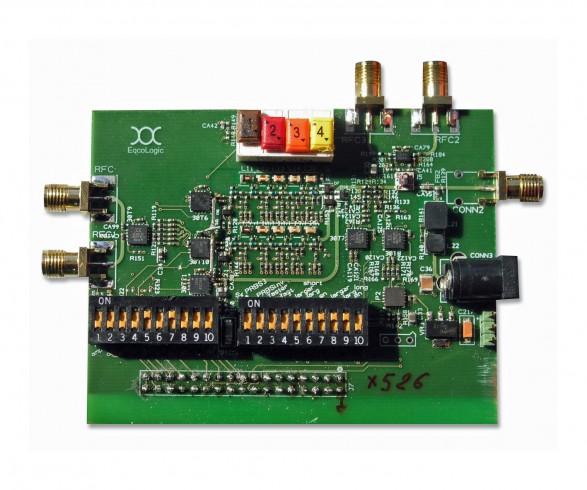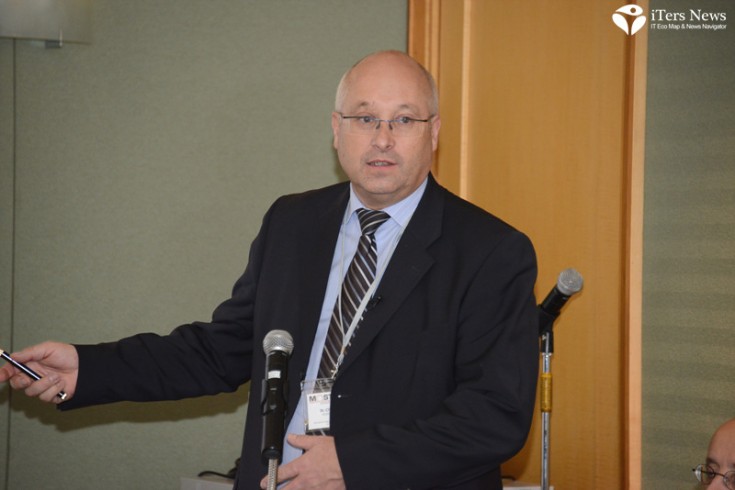(iTers News) - As car safety regulators in the EU and the U.S. are getting tougher and tougher on safety standards, the implementation of ADAS, or advanced driver assistance system will likely gain a speed in 2013.
In-vehicle Ethernet network technology will be in the widespread use, too, as more and more of car drivers are eager to have the same in-car infotainment and Internet experiences as they enjoy on their smart devices.
They are also asking car makers to explore a new way to integrate their smart devices into in-car infotainment systems to synchronize them to share contents between them.
The two fast emerging trends help explain why MOST Cooperation, an industry consortium of 16 car makers and over 65 automotive parts and components manufactures, is in a rush to roll out a new generation of MOST 150 multimedia streaming and networking technology standard.
MOST is a short for media oriented systems transport, a sort of triple-play in-car multimedia data streaming and transmission technology standard to carry packet data, streaming video and audio data, and control bits.
The first MOST technology standard -MOST 25- made its first debut on a BMW car in 2001, transmitting 25 megabits of video and audio streaming data per second. Since then, the MOST technology has been implemented into more than 125 car models from 16 luxury car makers, including BMW, Audi, Mercedes Benz, Porsche, and Toyota.
Called after the bandwidth of the channel, -a measure of how many bits of data can be delivered per second, the MOST 150 is a 3rd generation of technology standard based on MOST Rev. 3.0, carrying 150 megabits of data per second, three times faster than the 2nd generation MOST 50.
Yet, the gain in the speed, or the bandwidth isn’t the only improvement over the previous generation MOST 50.
(Photo caption :Christian Thiel, adminstrator of MOST Cooperation)
To satisfy car drivers’ strong demand for in-car Internet connectivity, MOST cooperation has added in-vehicle-ready Ethernet channel to the MOST 150, enabling all MOST-enabled in-car infotainment systems to have Internet-accessible.
Triple Plays
With the addition of the Ethernet layers, for example, in-car MOST 150 runs like IEEE820.11 x network, offering Ethernet/IP connections to all nodes of car infotainment systems.
The MOST 150 technology has already been adopted into a new line of luxury, premium Audi A3 model, setting a new audio and video streaming and network for a wide variety of luxury in-car infotainment system.
The commercial roll-out of the MOST 150 has huge technological implications. It will allow MOST technology to expand its reach beyond its traditional dashboard in-vehicle infotainment domain into new applications areas like drive assistant systems and mobile connectivity-based connected services, opening up new market opportunities.
Cases in point; Luxury car makers are now implementing rear-seat infotainment and headrest displays into cars. Moreover, more and more drivers are using their smart devices like smart phones and tablet PCs in a car in hot sync with in-vehicle infotainment system. Going forware, cars will become a wireless personal hotpot to connect to other cars in the vicinity, or transportation infrastructures on the roadside to share real-time information.
The implementation presents tough technological challenges, because it requires fatter data pipe lines, or bandwidth to carry huge amounts of data synchronously, as well as a variety of Internet connectivity protocols.
The MOST 150 can tackle the challenges, as it is still fast enough to carry 150 megabits of data per second, but also is open to a variety of IP-based applications like seamless connectivity of mobile devices, a car to car, as well as a car to infrastructure connectivity.

Good fit for ADAS
As is the case, that requires a multi-channel network that can transfer raw data gathered on a variety of sensors for analyzing and processing at a central processing unit and then send a set of command to activate various actuators in real-time and synchronous mode.
That’s where the forte of the MOST 150 comes in.
True enough, the MOST technology is plastic optical fiber physical layer-based multichannel data packet and control bit transmission network technology. Unlike other electric wires, the non-metallic MOST is immune from electromagnetic interference, or EMI devices. It is also light-weight.
The most crucial intrinsic attribute is that it can make the most efficient use of the network resources, as the network topology of the MOST is a rink-like , where each data has a dedicated data path.
"In Japan, there is always a very simple and fast explanation of MOST, because the city has a Yamanote line, which is a ring train around Tokyo. And, the MOST is basically a Yamanote line–like network where data travels out of a central station. Data can be compared to a train," said Christian Thiel, adminstrator of MOST Cooperation.
"And, the train is divided into cars. Here in the car, we have reserved seats for streaming data, packet data, and control data. Each type of data have a dedicated time slot I our MOST train. In this way, we have a premium quality of services for audio and video streaming. We have no interference, no collision, We don’t need any priority of handling, " added he.
He is also senior vice president with SMSC.
True enough, the MOST network is configured like a star structure of the public packet telephone switching system, or a daisy chain-and tree-like network structure where each node in the network can be served by a very dedicated single channel line.
As a result, there is no need for packetizing, buffering, and addressing. Either are no data collision, no interference, and no sample rate conversion, allowing car drivers to utilize 105 of the network capacity.
As is the case, network ICs in the MOST network doesn't need any in-built buffer memory circuitry for data storage.
So, the MOST is a perfect fit for real-time data transferring, a prerequisite requirements for ADAS.
Combined with it, the MOST 150 also adds a remote control functionality, enabling a central processing unit to send a set of controlling command over the network to INIC, or in-network IC in a slave mode to read and write registers like audio amplifiers and wok like a master controller for the register to send back command.
The remote control functionality steer clear of a need for an additional micro-controller and memory chip in the slave network.
Photos & Videos by JH Bae


